There was a period in the early 1960s when my parents had a television (in those days you rented) and one of the programs I liked to watch was All Our Yesterdays produced by Granada Television. It was a look back in time based on the newsreel footage of that week twenty-five years ago – a week-by-week journey through the late1930s and I found it fascinating.
Strange, though. how our sense of time shifts. The 1930s seemed such a long time ago then – a dim and distant time when people did things differently. The equivalent today would be a program about events in 1996 – which actually feels like it was just yesterday. So much for the changing sense of time.
This post is in recognition of the #1936Club – an online opportunity to indulge in the literary output of that year. Read more about that here.
And it is inspired by my friend the poet and maker Elaine Sexton. She shared a text – a poem,1943 – by the artist Francis Alÿs in which he reflects on what was happening to various European artists in that year. 1943 was the middle of WW2 and some – like Otto Dix – were in inner emigration and others like Salvador Dali in exile. By contrast, filmmaker Leni Riefenstahl was using a cast of prisoners borrowed from the camps to film part of Tiefland and Joseph Beuys was flying his Stuka dive-bomber over Crimea.
The poem begins: “I think about Morandi painting on top of a hill surrounded by fascism,” It’s 31 lines each of which begins with: “I think about….” And you can read it here.
So – in thinking about 1936 I have composed my own list of some of what was happening in arts and literature in that year. 1943 was right in the middle of WW2 but the ideological issues were already being played out across the world in 1936.
Mussolini had invaded Abyssinia and Hitler was busy re-arming and tightening the noose of laws around the necks of German Jews. Mussolini declared the German-Italian axis and together with the Soviet Union it was in full WW2 dress rehearsal mode in Spain. The League of Nations failed to stop the hostilities and the European powers chose sides in a rising tide of fascism.
In America, FDR won landslide reelection and March floods were followed by a heatwave, a drought, and another dustbowl amidst the enduring depression.
In the UK desperate jobless workers marched from Jarrow to London, Sir Oswald Mosley’s fascists were violent in the streets, King George V died and the scandalous news about the new king was kept from the British public for months. Martial law was declared in Palestine in response to the Arab revolt and Jesse Owens won four gold medals at the Summer Olympics in Berlin. And the first Butlins holiday camp opened in Skegness.
Oh, and I also read Virginia Woolf and George Orwell as my choices for the literary output of the year. I started with two essays: Virginia Woolf Why Art Follows Politics first published in The Daily Worker and the second Bookshop Memories by George Orwell.
Alÿs text poses a question about the moral obligations of artists in response to the violence and injustice of their times. That’s an issue that both Woolf and Orwell grappled with.
1936
I think about Morandi and the painting he sold to Mussolini who declared himself Emperor of Ethiopia,
I think about Gertrude Stein organizing the Picabia exhibition at the Chicago Arts Club and writing in the preface to the catalog:
This is an introduction to Picabia /
When I first knew him I said /
Which was it that I did not say I said
I think about Marinetti in Brazil boasting about his role in the Ethiopian War and justifying Italian colonial brutality,
I think about the bottle rack bought by Marcel Duchamp and Man Ray for the exhibition of Surrealist Objects at the Galerie Charles Ratton in Paris,
I think about Ronald Searle – the solicitor’s clerk – making satirical drawings for the Cambridge Daily News.
I think about the anonymous article Muddle Instead of Music published in Pravda, denouncing Dmitri Shostakovich’s opera, Lady Macbeth of the Mtsensk District,
I think about Gluck (Hannah Gluckstein) who celebrated and confirmed her relationship with Nesta Obermer with the painting called “Medallion” or “YouWe” that Gluck described in a letter to Nesta:
Now it is out and to the rest of the Universe I call Beware! Beware! We are not to be trifled with,
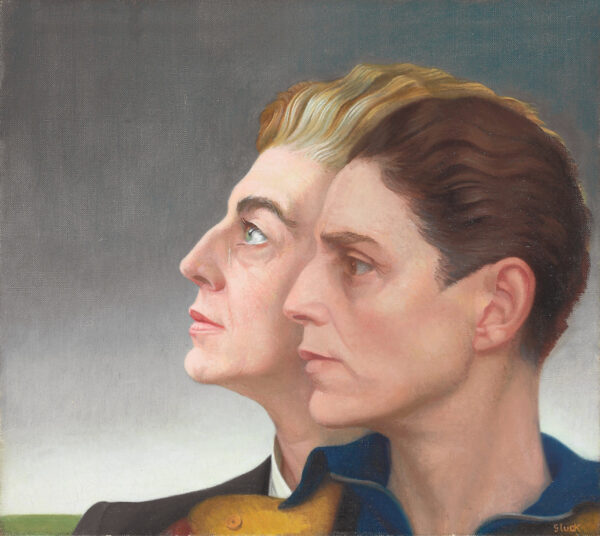
Gluck (Hannah Gluckstein) (British, 1895–1978) Medallion,1936
I think about Jeanne Mammen deprived of her income, turning to abstract art, and living alone in Berlin,
I think about Langston Hughes whose poem Let America Be America Again was published in Esquire Magazine,
I think about David Alfaro Siqueiros, Stalinist, and his quarrels with Trotskyist Diego Rivera as left-leaning artists sought ways to reconcile modernism and political action in time of rising Fascism,
I think about Eileen Agar – the only women artist invited to exhibit in the International Surrealist Exhibition in London – and her affair with its organizer Paul Nash who exhibited “Swanage” a work with the name of the place I was born,
I think about Salvador Dalí who started a lecture at that exhibition wearing his symbolic diver’s outfit, a jeweled sword at his side, two borzoi dogs on a leash, and holding a billiard cue and how, after a few minutes, he began to suffocate inside his helmet, and his wife Gala had to unscrew the helmet to rescue him,
I think about Dylan Thomas attending the Exhibition and carrying around a cup of boiled string, asking “weak or strong?”,
I think about Max Beckmann living his last year in his homeland before fleeing to Holland and finally settling in the US after the war,
I think about Vladimir Tatlin – mocked, prosecuted, banned – painting a narrow street of Leningrad that conveys tension and a sense of desolation,
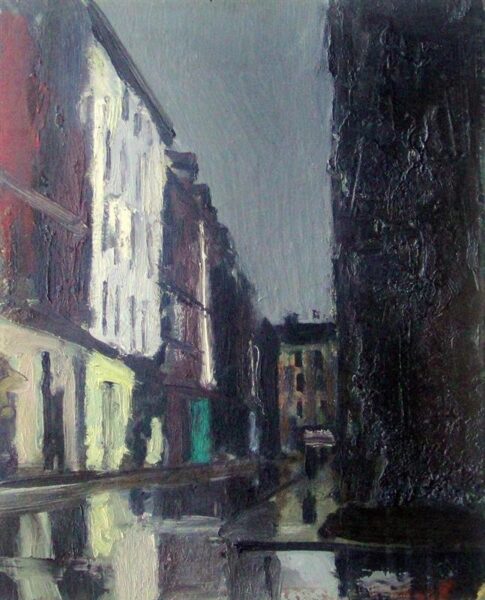
I think about my mother in Croydon seeing the flames in the sky as the Crystal Palace burned,
I think about Joseph Beuys as a member of the Hitler Youth participating in the Nuremberg rally in September when he was 15 years old,
I think about thirteen-year-old Diane Nemerov meeting Allen Arbus, a student employed in the art department of her family’s store – Russeks – in Manhattan,
I think about how Matisse’s passion for birds and especially doves began during the summer while strolling along the banks of the River Seine,
I think about Lee Miller taking her camera into the Western Desert, near Siwa, a remote oasis town, where she made a photograph she called “Portraits of Space,” a Surrealist exercise that inspired René Magritte to paint Le Baiser (“The Kiss”),
I think about Picasso being appointed “director of the Prado, albeit in absentia” by the Spanish Republicans and supplying the funds to evacuate the museum’s collection to Geneva,
I think about the Nazi supporter Emile Nolde whose 1936 painting “Breaker” hung in Chancellor Angela Merkel’s study until recently,
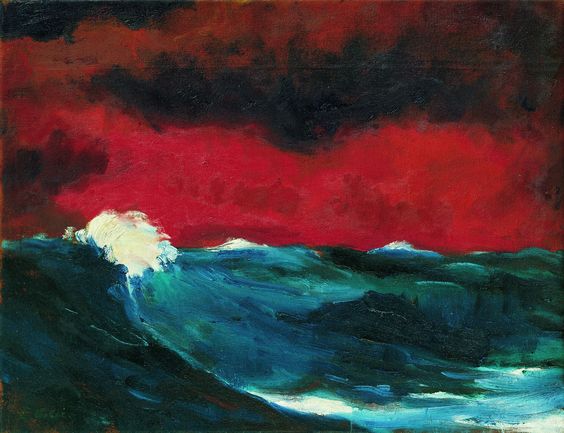
I think about Henri Cartier-Bresson co-directing an anti-fascist film to promote the Republican medical services in Spain,
I think about Wallace Stevens breaking bones in his hand on Hemingway’s jaw and getting knocked into a puddle,
I think about Hannah Höch ending her ten-year relationship with Til Brugman,
I think about French psychoanalyst Jacques Lacan initiating a theory that proposed the self as a “decentered subject”,
I think about René Magritte in a self-portrait staring at an egg and painting a bird in Brussels,
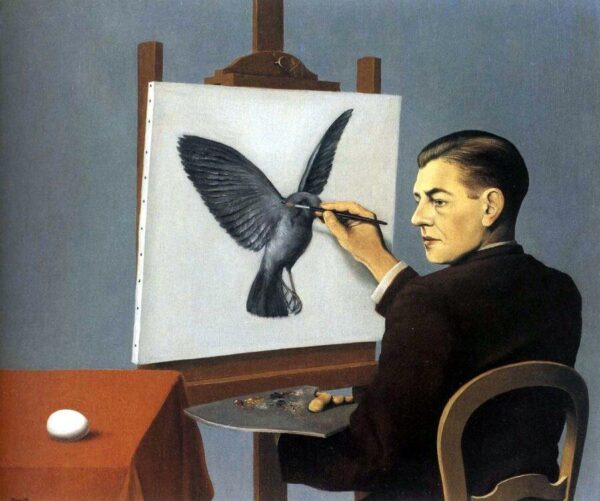
I think about Leni Riefenstahl creating her propaganda tour-de-force Triumph des Willens (Triumph of the Will) in conjunction with the Berlin Olympic Games,
I think about Štefan Lux who shot himself in order to alert the world leaders of the rising dangers of German antisemitism, expansionism, and militarism in the general assembly of the League of Nations, after shouting “C’est le dernier coup” (“This is the final blow”),
I think about Eric Ravilious getting the Wedgewood commission for the coronation mug and how he was having an affair with Helen Binyon,
I think about Frida Kahlo painting ”My Grandparents, My Parents and I,” a family portrait that included her Jewish ancestors.
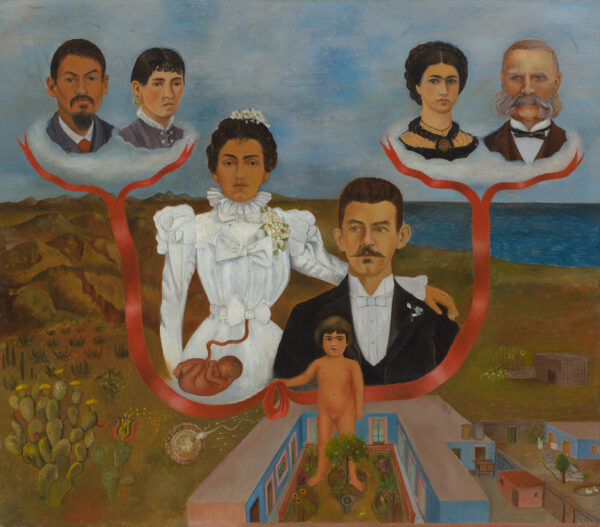
My Grandparents, My Parents, and I (Family Tree) 1936
I think about Evelyn Waugh whose account of his Abyssinian experiences – Waugh in Abyssinia – Rose Macaulay dismissed as a “fascist tract”,
I think about Nancy Cunard moving to Spain to cover the civil war and presciently warning that events in Spain were a prelude to another world war,
I think about P.G. Wodehouse taking his second trip to Hollywood to work for MGM,
I think about Virginia Woolf describing King Edward VIII as having ”a set pig-headed steely mind” and as being ”a very ordinary young man” who will ”follow his luggage,” and Mrs. Simpson, to Cannes,
I think about Agatha Christie who had three novels published,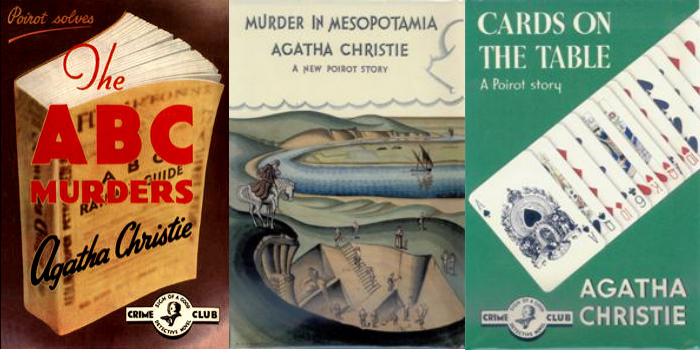
I think about Iran becoming the first Muslim country to ban the wearing of veils in public,
I think about Jewish booksellers banned from the trade in Nazi Germany,
I think about Jawaharial Nehru who was elected president of the Indian national congress and whose wife Kamala died of tuberculosis in a sanitorium in Switzerland,
I think about Dame Laura Knight becoming the first woman appointed to the Royal Academy,
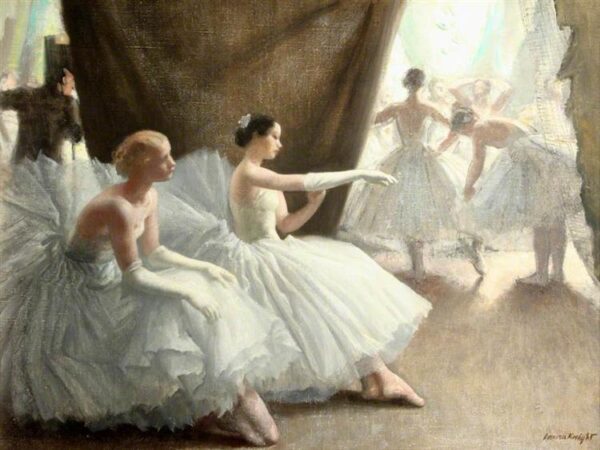
I think about Ezra Pound writing about Chinese poetry and admiring Mussolini and Hitler,
I think about Bill Wyman of the Rolling Stones born William George Perks in Lewisham South London, the son of a bricklayer who described his childhood as “scarred by poverty”,
I think about Pope Francis – Jorge Mario Bergoglio – born in Flores, a neighborhood of Buenos Aires,
I think about Lucille Clifton from Erie County, NY who traced her family’s roots to the West African Kingdom of Dahomey, now Benin, born with two extra fingers.
I think about June Jordan born in 1936 in Harlem, New York, as the only child of Jamaican immigrant parents who recalls her father telling her: “There was a war against colored people, I had to become a soldier”,
I think about photographers Endre Friedmann and Gerda Taro jointly devising the name Robert Capa and leaving Paris for Spain to cover the Civil War,
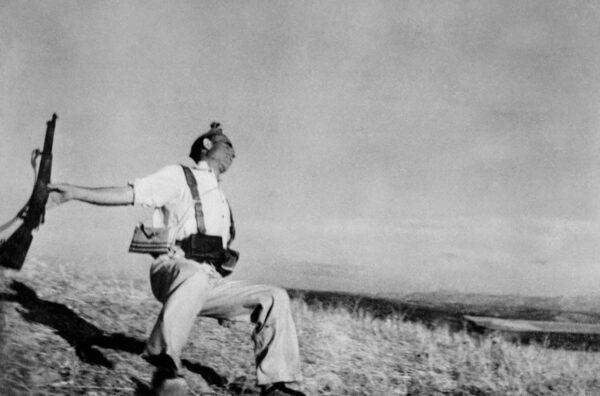
I think about Federico García Lorca arrested and murdered by Francoist militia during the White Terror and whose body has never been found,
I think about U.K. authorities deciding they will not prosecute or seize copies of James Joyce’s 1922 novel Ulysses,
I think about Pigeon Post by Arthur Ransome – the first winner of The Carnegie Medal for excellence in children’s literature,
I think about Djuna Barnes living at what was known as Hangover Hall – a manor house in Devon rented by Peggy Guggenheim – and of Nightwood – her classic that was admired and published by T.S.Eliot but not a commercial success,
I think about English painter, print-maker, war artist, author, and illustrator Edward Ardizzone who published his quite lovely Little Tim and the Brave Sea Captain,
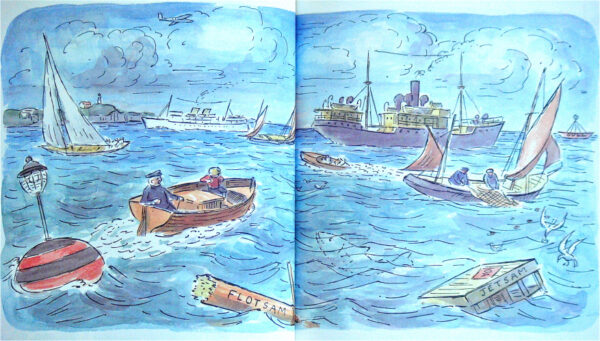
I think about Worzel Gummidge – the scarecrow who comes to life as created by Barbara Euphan Todd,
I think about Rudyard Kipling, G.K. Chesterton and A.E.Houseman dying in the same year,
I think about Augustus John introducing his lover Caitlin Macnamara to Dylan Thomas in a pub in Fitzrovia and how Caitlin and Dylan then spent the next few days together at the Eiffel Tower Hotel, charging the bill to John,
I think about T.S.Eliot who crossed the Atlantic to be with Emily Hale, the thousand letters he wrote to her, and about Burnt Norton – the first of The Four Quartets to be published,
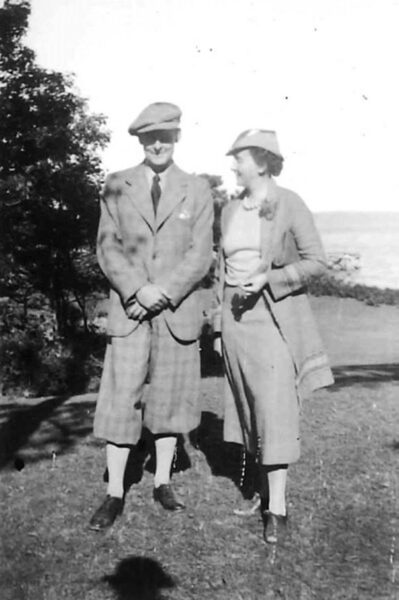
I think of three extraordinary American photographers – Dorothea Lange, Berenice Abbott, and Margaret Bourke-White,
And I think of all the other people – odious and otherwise – and all the events – brutal and otherwise – and the artists and writers and thinkers and makers and doers and ordinary and extraordinary people of 1936.
And all this thinking and my head hurts. I need to settle in with a cuppa and a good read. Fortunately, there are all the #1936Club suggestions waiting for me while I start with an old favorite: Keep the Aspidistra Flying (George Orwell).
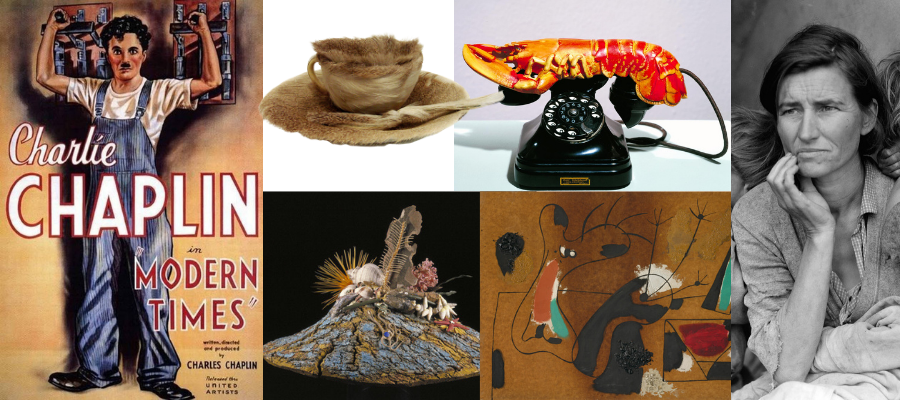


What an amazing assortment of events! My favorites: the paintings of Leningrad and Ballet. I also love the photo of T.S. Eliot (are those plus fours?) with Emily Hale at Woods Hole (about 90 minutes from me, although one only goes there to take the ferry to Martha’s Vineyard or Nantucket, which I do seldom). I am #TeamHale, however, and think he treated her very badly. I also like Edward Ardizzone and recently came across an edition of Daddy Long Legs he illustrated which I really enjoyed.
Yes – I believe they are plus fours but why I would have to look up. And yes on TeamHale. And I agree on Ardizzone. Thank-you!
I was most intrigued by learning that Esquire had published Langston Hughes. My mother talked frequently about the late 1930’s when she was a teenager in Buffalo, New York. She and her parents would listen to the radio each night and really understood how dire situations in Europe were.
Gosh, what a wonderful overview! So detailed. Also, I’ve never seen that Magritte painting before, and I love it.
It does provide a little context to all those wonderful books folks are reading thanks to the #1936Club. Agreed on the Magritte – a very witty painting.
A superb but absolutely overwhelming response to the theme; I salute you.
It is rather overwhelming and I actually left out about twice that. It was a most busy and interesting year.
You neglected to mention that I was born in 1936 (Oct. 18, to be exact), but I forgive you for that oversight because your post was otherwise so well researched and presented. 😉
P.S. You may also be interested to learn that in 1936, potatoes were 3 cents a pound; bread 8 cents a loaf; milk 12 cents a quart; steak 39 cents a pound; eggs 40 cents a dozen; and butter 42 cents a pound. I don’t know how much I cost a pound, but since my weight isn’t given on my birth certificate, I must have been priceless.
Deep apologies for that egregious omission. And yes, indeed, I am always interested in the price of potatoes. And you are truly priceless. No doubt you could easily supply anecdotes about popular music from 1936 and wonderful examples of it to go with. Thank you for showing me the error of my ways. Always instructive and improving to have the opportunity to grovel in apology.
Beautiful & thought provoking. Thank you.
Thanks Cath.
Josie this is absolutely magnificent! Many of the things you mention reach into my own life; Arthur Ransome, Worzel Gummidge, Edward Ardizzone, and of course Christie, Woolf and Stein. That Laura Knight painting was our mother’s pride and joy and we grew up with it, although nowadays I much prefer the Tatlin and the Nolde.
Thanks Gerts. It was tons of fun to put together. The hard part was leaving so much out.